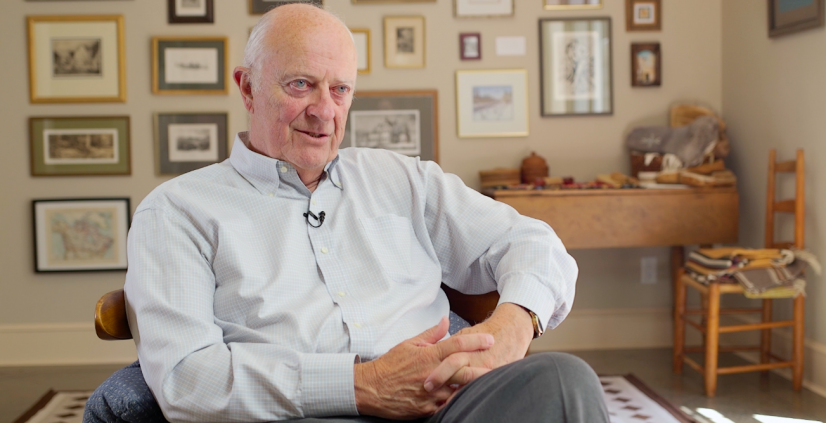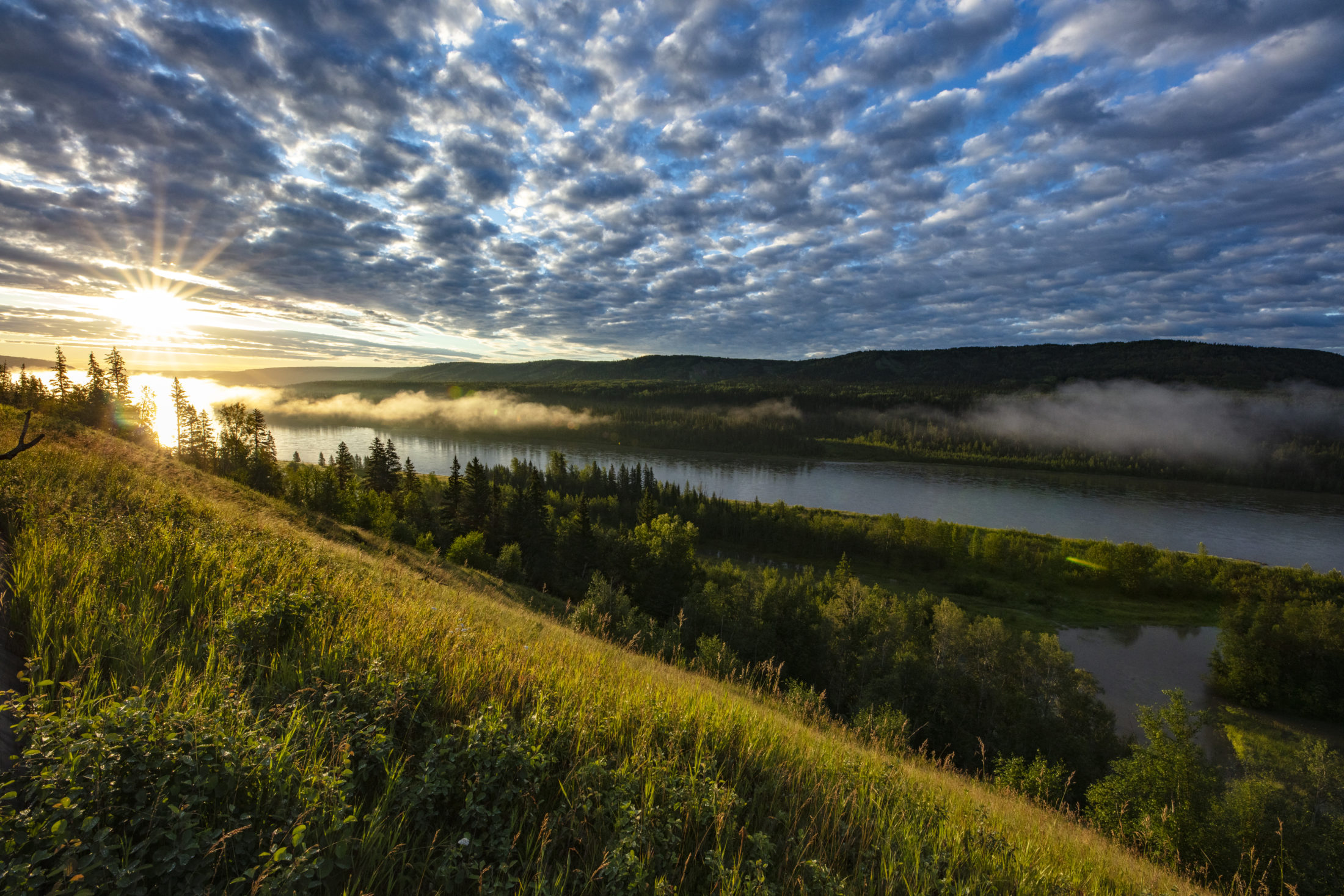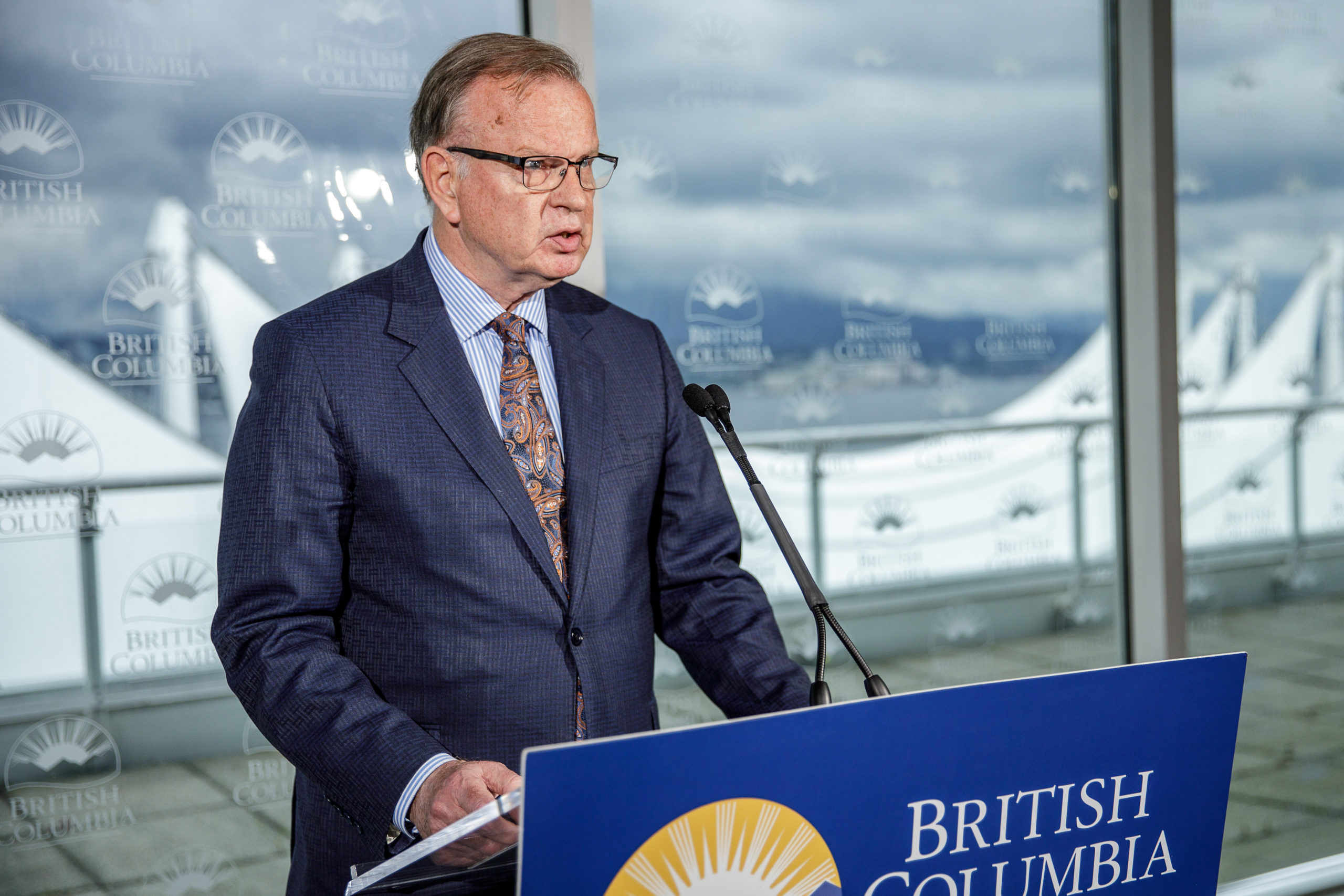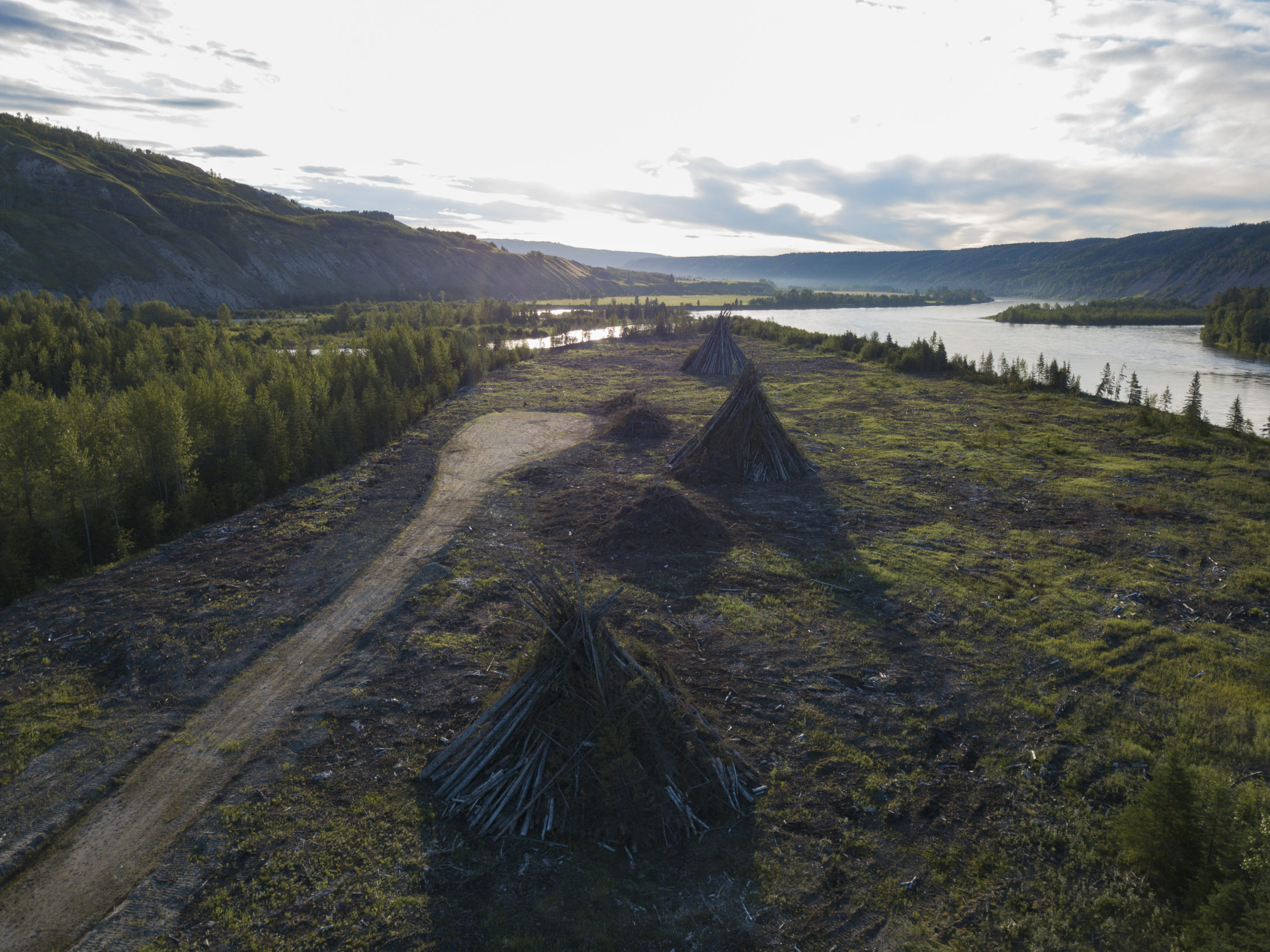
Hope for a huge, ancient and imperilled fish
First Nations are leading efforts to make sure lake sturgeon can find a home in...
The Site C dam project is facing unknown cost overruns, schedule delays and such profound geotechnical problems that its overall health has been classified as “red,” meaning the project is in serious trouble, according to two overdue project reports released by BC Hydro on Friday.
BC Hydro and B.C. Energy Minister Bruce Ralston blamed the COVID-19 pandemic for the Site C project’s deepening woes.
Yet BC Hydro’s own reports show the project was facing significant cost and scheduling pressures long before the pandemic emerged in B.C. On March 18, B.C. declared a state of emergency, but the province deemed the Site C dam an essential service, allowing work on the $10.7 billion project to continue.
According to the reports, as of December BC Hydro was already scrambling to deal with formidable geotechnical issues on the Peace River’s notoriously unstable right bank, which is intended to provide the foundation for the project’s powerhouse, spillway and future dam. The reports said the magnitude of the geotechnical issues has become increasingly apparent this year.
If the issues cannot be quickly resolved, BC Hydro will miss a critical fall deadline for diverting the Peace River in order to build the dam structure. BC Hydro previously said missing the river diversion deadline could cause a one-year schedule delay and add substantially to the Site C budget.
“I
don’t think it’s credible [to use the pandemic] in explaining what’s happened so far,” said Harry Swain, chair of the panel that examined Site C for the provincial and federal governments.
Swain said significant problems with foundation conditions under the right bank have been known for at least two years, giving BC Hydro plenty of time to update the project’s cost and schedule.
“BC Hydro is concealing information or the government is not asking for it,” Swain told The Narwhal.

Harry Swain chaired the panel that reviewed the Site C dam on behalf of the provincial and federal governments. Photo: Jayce Hawkins / The Narwhal
One of the progress reports, which also contains the Site C annual report, covers the three-month period ending December 31, 2019. The second report covers the period ending March 31, 2020.
Former BC Hydro president and CEO Marc Eliesen said while the pandemic will no doubt have a serious impact on the Site C project’s schedule and cost, a number of significant financial pressures either pre-date the pandemic or are unrelated to it.
“Given the performance by BC Hydro in managing and administering this particular project right from the start, it’s been nothing but a series of financial errors and lack of quality management and evaluation of the project,” said Eliesen, also the former chair and CEO of Ontario Hydro and former chair of Manitoba Hydro.
Along with other independent energy experts, Eliesen and Swain have warned for years that the Site C project should never have proceeded and will incur crippling costs.
“A number of us over the years have commented on what we thought was going to take place and, in fact, it is taking place,” Eliesen told The Narwhal.
Both he and Swain predict the Site C project will cost more than $12 billion — a figure that aligns with the findings of a fast-tracked 2017 review of the project’s economics by the independent B.C. Utilities Commission.
The review also found the same amount of electricity could be produced by other renewables, including wind power, for $8.8 billion or less, the price tag when the former Liberal government granted final approval in December 2014.
The Site C dam will flood 128 kilometres of the Peace River and its tributaries, forcing families from their homes and destroying Indigenous gravesites, some of Canada’s best farmland and habitat for more than 100 species at risk of extinction.
The dam is the largest publicly funded project in B.C.’s history.

Sunset on the Peace River, which will be flooded for the Site C dam. Photo: Byron Dueck
In January, The Narwhal reported that the Site C dam project was poised for more cost overruns and schedule delays despite repeated assurances from B.C.’s NDP government that the project would be delivered on time and within its revised budget.
BC Hydro’s unusually frank quarterly report to the B.C. Utilities Commission, filed on Jan. 15 and covering the period up to June 30, 2019, revealed significant problems with the dam amidst the typically positive project updates.
Some of the more serious issues included “significant cost pressures and/or budget increases” since the NDP government approved an additional $2 billion for the project in Dec. 2017 and a September cost risk analysis showing the revised project budget was already “under pressure.”
During a press conference on Friday, Ralston said he is “very concerned” by the latest BC Hydro reports.
“These reports provide a first glimpse into how Covid-19 has caused uncertainty for the project’s schedule and added cost pressures to its budget,” Ralston said.
“The ongoing pandemic has added to the challenges already facing the project.”

B.C. Minister of Energy, Mines and Petroleum Resources, Bruce Ralston. Photo: Province of British Columbia / Flickr
Ralston announced the appointment of Peter Milburn — a former deputy minister of finance and secretary to the Treasury Board— as a special Site C project advisor who will work with BC Hydro and the Site C project assurance board to examine the project and provide the government with independent advice.
Premier John Horgan announced the creation of the project assurance board in December 2017 when the NDP greenlighted the Site C dam, saying the board would provide oversight to ensure the project stayed on schedule and within its newly revised $10.7 billion budget.
A complete list of board members and the board’s findings and reports have been kept secret.
In January, The Narwhal submitted a Freedom of Information request to BC Hydro asking for all assurance board meeting agendas, minutes, reports and recommendations. But BC Hydro has not provided a response to the FOI request, even though deadlines for answering have passed.
Eliesen called Milburn’s appointment “déjà vu,” noting the project assurance board was supposed to provide that oversight and advice. Swain said the appointment “appears to be a confession” that the project assurance board isn’t working.
“But how can we tell, because of course nothing they have ever reported has become public,” Swain said. “Adding yet another layer of oversight smacks of desperation.”
“Peter Milburn is well-qualified but has to cope with the government’s incomprehensible decision in 2017 to continue with a project that all evidence showed was already seriously underwater.”
At a short telephone news conference that allowed only a few questions from selected reporters, Ralston did not directly answer a question about whether Milburn’s findings would be made public.
“We are still subject to the mushroom farm treatment,” Swain said. “Everything is done in the dark and you pour a lot of horse piss on it.”
Swain said it’s long past time for the government to be upfront with BC Hydro residential ratepayers about the true cost of the Site C dam, given large discounts for BC Hydro’s industrial customers. He said the Site C project, coupled with the costs of contracts with independent power producers, will raise hydro rates substantially.
“The government must have studied these numbers to death but dares not release them a year before an election. It’s too late to blame this coming calamity on the Liberals, as the NDP fully own this project now.”

Slash piles on an island in the Peace River, which as been logged in advance of flooding for the Site C dam. Photo: Byron Dueck
Green Party interim leader Adam Olsen said the Site C project should not be given a blank cheque to proceed at any cost imaginable and the NDP should “seriously consider” cancelling the project.
“The NDP needs to be clear about the price and make a decision before river diversion takes place and we change the flow of the Peace River forever, which is scheduled for this fall. We will be holding this government accountable for the next moves they make,” said Olsen, MLA for Saanich-North and the Islands.
“I’m concerned that the government is saying Site C is past the point of no return, while admitting that they don’t know the current state of the project,” Olsen said.
“This leaves B.C. ratepayers at significant risk.”
The Site C dam was approved in December 2014 by Christy Clark’s BC Liberals, after the government changed the law to remove the watchdog B.C. Utilities Commission from determining if the project was in the public interest.
Preliminary clearing and construction work for the project began in July 2015, and Clark famously vowed to push the project “past the point of no return.”

A before and after photo of the Peace River valley, which has been logged before flooding for the Site C dam. Photo: Garth Lenz
Warning signs of future cost overruns and schedule delays were apparent only eight months after preliminary construction started, yet BC Hydro continued to issue press releases saying the project was on time and on budget.
By the end of March 2016, BC Hydro had already spent more money than projected and missed key benchmarks.
In 2018, international hydro expert Harvey Elwin testified that the Site C dam faced an “extremely high probability” of at least a one-year construction delay. Elwin, who has held major leadership roles with large multinationals working on hydroelectric projects around the world, was an expert witness in a First Nations application for an injunction to halt work on the dam pending the resolution of an on-going legal case. (That injunction was denied, but the legal case continues.)
Elwin wrote a 196-page report identifying seven major issues responsible for existing and future construction delays on the dam.
“Traditionally, there are major risks in dam and hydroelectric projects, especially when they have complex and challenging geology and foundations like the Site C project,” Elwin noted.
Elwin also described the secrecy surrounding the Site C project as “extraordinary,” saying he had never encountered anything like it in five decades of working on major hydro projects around the world, including the Three Gorges dam in China.
Get the inside scoop on The Narwhal’s environment and climate reporting by signing up for our free newsletter. A $335 million funding commitment to fund...
Continue reading
First Nations are leading efforts to make sure lake sturgeon can find a home in...

We’re excited to share that an investigation by The Narwhal is a finalist for the...

A new documentary, Nechako: It Will Be a Big River Again, dives into how two...
